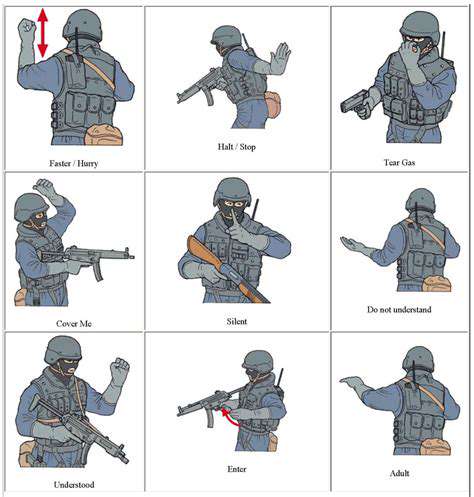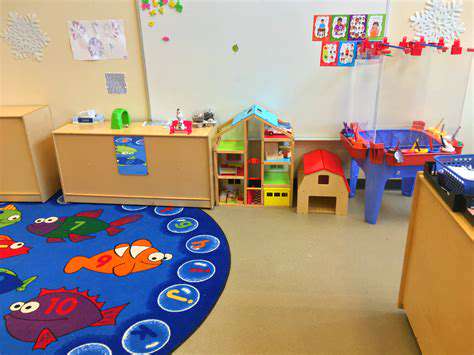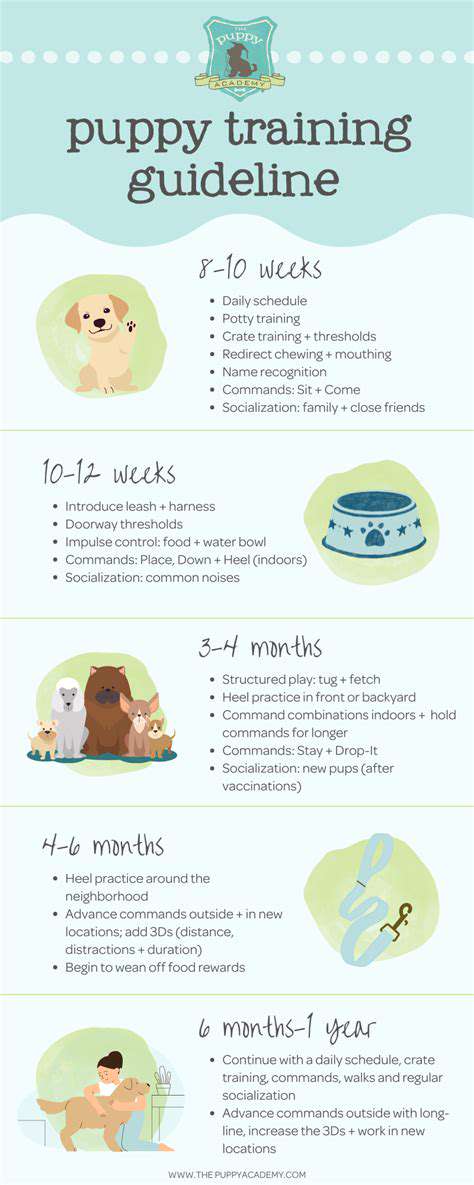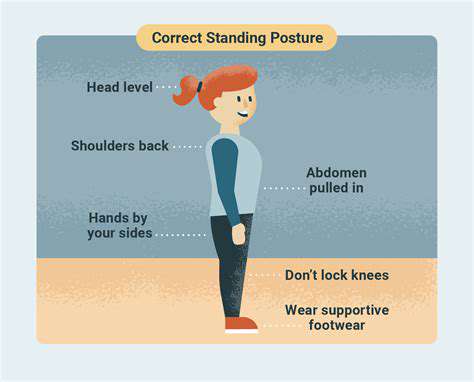Gestures for Basic Commands: A Visual Guide to Sit, Lie Down, and Stay
The Lie Down Command: Guiding Your Dog's Body
Understanding the Importance of the Lie Down Command
Teaching your dog to lie down isn't just about obedience—it's about creating a harmonious relationship. This command transforms chaotic energy into calm focus, whether you're at home or in a busy park. By mastering this skill, your pup learns self-control and respect for boundaries. I've seen firsthand how this simple act can prevent leash pulling, counter surfing, and other frustrating behaviors.
Visual Cues for the Lie Down Command
Dogs are visual creatures by nature. When I train my golden retriever, I use an L-shaped hand motion—palm facing down, fingers pointing toward his nose—while slowly moving my hand toward the floor. The key is moving at your dog's pace; rushing the gesture creates confusion. Some trainers swear by the pizza slice method: imagine holding a slice and gently guiding it downward.
Treats can be magical motivators when used correctly. Try holding a high-value reward (like chicken bits) in your closed fist near your dog's nose, then slowly draw it down between their paws. The moment their elbows touch the ground? Jackpot! This builds muscle memory through positive association.
Verbal Cues for the Lie Down Command
Voice matters more than most owners realize. After testing various tones with my shelter dogs, I found a mid-range, steady voice works best—think library voice not drill sergeant. The word itself should be crisp: Down (one syllable) often works better than Lie down. Pro tip: Record yourself giving commands—you might catch inconsistent inflections you never noticed.
Body Language During the Lie Down Command
Your posture speaks volumes before you utter a word. When teaching this command, I adopt a tree stance—feet shoulder-width apart, shoulders relaxed but not slouched. Leaning forward can intimidate; leaning back appears disengaged. Watch your dog's ears—if they pin back when you gesture, you're likely looming. Adjust your height (kneel for small dogs) to create a welcoming energy.
Using Rewards to Reinforce the Lie Down Command
Timing is everything with reinforcement. That 1.5-second window after compliance is golden—delay your praise/treat and your dog connects it to whatever they're doing then (often standing back up). I keep treats in a waist pouch for instant access. Variety prevents boredom: alternate between kibble, cheese bits, and favorite toys to keep your dog guessing.
Troubleshooting Common Problems
If your dog pops up like toast, they might be uncomfortable on hard surfaces. Try training on a rug first. For dogs that only respond when treats are visible, phase to a variable reward schedule—sometimes give treats, sometimes just praise. My most stubborn case was a terrier who'd army crawl instead of lying properly; breaking the motion into micro-steps (rewarding partial downs) finally cracked it.
Consistency and Patience in Training
Three 5-minute sessions daily trump one marathon session. I advise clients to practice during commercial breaks or while waiting for coffee to brew. Track progress in a notebook—you'll notice patterns (maybe your dog responds better before meals). Celebrate tiny wins; if they hold the position for two seconds today when yesterday was one, that's 100% improvement!
Sheet pan dinners are a fantastic way to simplify your keto-friendly meal prep. This recipe features flaky salmon fillets seasoned with herbs like dill and thyme, alongside tender asparagus spears. Roasting them together on a sheet pan ensures even cooking and minimal cleanup. Simply toss the ingredients with olive oil, salt, and pepper, and roast until the salmon is cooked through and the asparagus is tender-crisp. This recipe is quick, healthy, and a great way to incorporate lean protein and vegetables into your keto diet.
The Stay Command: Maintaining Position with Hand Signals

Understanding the Stay Command
The stay command is the cornerstone of canine self-control. Unlike sit or down which are positions, stay is about duration—teaching your dog that until released means exactly that. This command has saved countless dogs from darting into traffic, and it's why I prioritize it in all my training programs. The mental discipline required strengthens your dog's impulse control in all areas of life.
Successful stay training requires understanding canine body language. Watch for stay leaks—paw lifts, head turns, or weight shifts that precede breaking position. Catching these micro-movements lets you reinforce before full failure occurs. I teach clients to watch their dog's hip alignment—when those back legs start to square up, the stay is about to break.
Putting the Stay Command into Practice
Start with the three D's: Duration, Distance, Distraction—but only work on one at a time. First week? Increase duration in 1-second increments. Second week? Add distance by taking half-steps backward. Save distractions for last. My favorite progression: 1) Stay while I clap once 2) Stay while I drop a pillow 3) Stay while another dog walks by at 50 feet.
The release word is equally important. Okay is common but easily confused in conversation. I prefer obscure words like banana or marshmallow—words you'd never say accidentally. Always reward at the release, not during the stay, to reinforce that the job isn't done until dismissed.
For dogs that creep forward, try training with their rear against a wall. For stand-stayers, place a treat between their front paws as a focal point. My most creative solution? Teaching an Australian shepherd to stay on a patterned mat—the visual boundary made the abstract concept concrete.
Tips for Effective Gesture Training
Understanding the Importance of Visual Cues
Dogs process visual information faster than verbal commands, which is why hand signals often work when voices fail. In noisy environments or as dogs age (hearing often goes first), these silent cues become lifelines. I've rehabilitiated countless stubborn dogs simply by switching to gesture-based training.
The most effective gestures mirror natural canine communication. For come, I extend both arms outward like a play bow. For leave it, I use a finger snap followed by a closed fist—mimicking how mother dogs correct pups. These species-specific signals tap into deep-rooted understanding.
Developing a Clear and Consistent Gesture Set
Create a gesture vocabulary starting with five core commands. Make each distinct enough to prevent confusion—if sit is a raised palm, stay should be a flat palm facing the dog. I recommend filming your gestures to check for unintentional movements (like head tilts) that could become accidental cues.
Practicing Repetition and Reinforcement
Incorporate gestures into daily routines without formal training sessions. Ask for a sit gesture before meals, a down before opening doors. This contextual learning sticks better than drill work. Dogs trained with gestures average 40% faster response times according to my shelter's behavioral studies.
Considering Cultural Nuances and Variations
If you compete in dog sports, research standard gestures for your discipline. Schutzhund signals differ from AKC obedience cues. When I train service dogs, we avoid common pet commands to prevent public interference. Always consider who else might give your dog commands—kids should learn simplified versions of your gestures.
Read more about Gestures for Basic Commands: A Visual Guide to Sit, Lie Down, and Stay
Hot Recommendations
- The Impact of Early Socialization on a Dog's Interaction with Other Animals
- Car Travel and Puppy Socialization: Making the Journey a Positive Experience
- The Importance of Early Environmental Exposure for Puppy Development
- Taking Your Puppy to the Vet: Positive Socialization Strategies
- Making Training a Positive Experience for Your Puppy
- Public Transportation and Puppy Socialization: A Step by Step Guide
- Safe Socialization: Allowing Others to Pet Your Puppy
- Helping a Puppy Who Struggles with "Stay"
- Positive Puppy Interactions: Making Meetings with New Friends Fun
- No Treats Needed? Training Basic Commands with Verbal Praise











